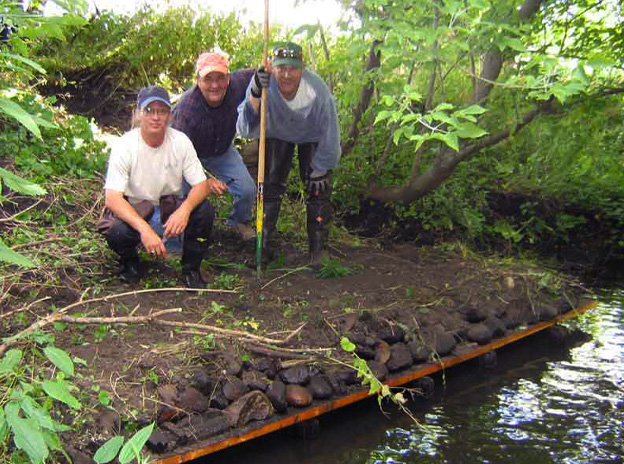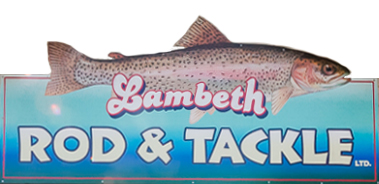TRAA Salmonid Monitoring
Spring 2012
Here's an overview of what happened over a few weekends in the
Spring of 2012 when TRAA members and personnel from the Upper
Thames
River Conservation Authority (UTRCA) waded in for Year 3
of
our
5-year Salmonid
Tagging and Monitoring Program.
Jon George, an MNR biologist from Thunder Bay
who is helping us out with this project, compiled
the
comparative results of 2010 (Year 1) and
2011 (Year 2) and 2012 (Year 3) in an easy-to-understand report.
Click Here to have a look; it's quite interesting.
Click Here for pictures and descriptions from Year 2 (2011).
We'll be doing it all over again during the spring of 2013 for Year 4.

Dan Schinkelshoek and Rob Huber follow closely ready for stunned
rainbow trout to drift back to them.

Dan assumes the "ready position" as a likely looking
undercut is
probed with the electro-shocker.

Oddly enough, many fish this year were found in the faster
flows such as this good riffle just upstream from a large culvert.

Randy Bailey prepares to revive female male rainbow trout
in
the slower
section of the creek before
we could safely
conduct
the tagging, measuring and sampling procedures.

Paul Noble measures the girth of a solid rainbow trout. The
length, the sex and whether or not the fish has already
spawned are
also recorded in the monitoring log. This
information, along with a scale sample are all referenced
to the tag number that will be attached to the fish.

The "sewing" of a small, plastic
tag to the dorsal fin of
the
rainbow trout is actually the trickiest of all the
procedures performed.

The tag that you can clearly see attached to this male
steelhead
has a number sequence that will help the OMNR
and the TRAA to understand the fish's activities.

Scale samples are taken from every tagged fish for DNA
analysis to determine age and genetic classification. While
our tags are green, there are lots of different tags on many
species of fish out there. It's vital that you report these tag
numbers and descriptions to the OMNR whether you keep or
release the fish. Otherwise all this work is compromised.

Not every fish netted is a trout and that's a good thing!
This hognose sucker is native to faster flowing coldwater
streams and rivers. They're an indicator of good to
excellent water quality.

And yes, there's lots of trout, both rainbows and browns. We
love
to see the various year classes that indicate a
successful
rate of reproduction. It also points to
a healthy
biomass
in the stream to support both resident and lake-run trout.

It's always a thrill to have nice healthy browns mixed in with
the bruiser
steelhead that we target for the monitoring program.

Rob safely delivers another rainbow trout back to the stream
after she's given up her vital statistics in the name of science!
Click Here for pictures and descriptions from Year 2 (2011).










